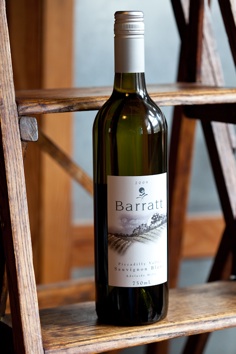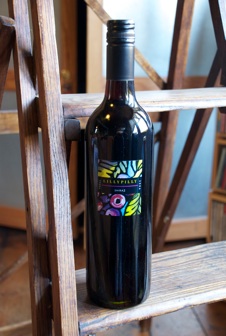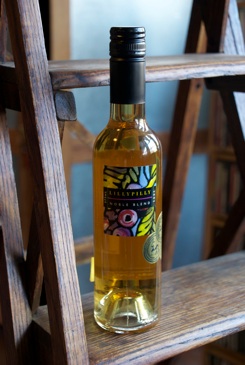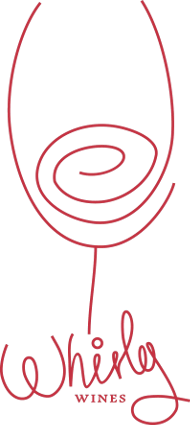The roads to The Riverina and LILLYPILLY the home of some of the best stickies in Australia!
I discovered Lillypilly in May 2000 after a thrilling drive through the most amazing lightening storm, which given there was only one road north, I had no choice but to head straight into the middle of this wonderful freak of nature. It was a scary moment since I shall always remember seeing a lightening bolt take off just to my right as I closed my eyes and went through! I had spent the last week traveling slowly east from The Macedon ranges, just north of Melbourne discovering wine regions as I went along: Chateau Tahbilk’s wonderful old cellar contrasted so dramatically with Mitchelton’s modern structure. I cut across country via Langwood, where there were lambs everywhere and discovered a lovely little pub called The White Hart. Then up to Euroa and then Mansfield and Delatite vineyards high up on the plateau below the great divide; the next day across country to King valley via the Tower lookout and Tolmie a little commune in the middle of nowhere, Scottish this time. There are no red gums up here just windy hilly little roads. I wondered as I sat in the lookout, looking down the valley what it must have been like holding out up here with Ned Kelly the famous robber. I remember the place had such a great view down the valley. From here I headed north to Milawa which is Brown Brothers wine country in a wide green valley. Close by is the King valley (where they are pioneering Italian varietals which is exciting but the wines are still a little young so now in 2013, ten years later, this would be an interesting place to re-visit). From here I headed north to Beechworth, contrasting so markedly with the green of The King valley. Beechworth is brown and arid. I had heard about the wonderful wines being made at Giaconda (these wines were on the list at Bibendum Restaurant) and I relished sitting down in Rick Kinzbrunner’s little tasting room and tasting some amazing Chardonnay out of the barrel. This is great wine country. The wonderfully named Pennyweight has history and beauty behind it and it was here I tasted my first Gamay ( in OZ) and very good it was too. Oak tree’s dominate the landscape here, full and bright, reminding me a little of my teenage years in the delightful countryside around Cowfold in West Sussex. Triple J radio springs to life again here, being so close to the NSW border, and the music is so good it makes one want to traverse the NSW border forever.
From here I drove further north to Rutherglen, where wineries like Chamber’s and Campbell’s have made their names famous throughout the world for producing bench mark Muscat and Tokay fortified wines.
This country is River Murray dominated and this river divides Victoria and NSW. It’s flat yet fascinating. The power of the Murray! Such an influential force it is creating these wonderful communities along the way, like Albury, Carowa and Yarrawonga. It was here that I encountered the most amazing lightening storms along the flat long roads heading north from the aforementioned Carowa, through the sweetly named towns of Sangar, Urana and Narrandera; it felt as though the lightening and thunder were following me along the road into the Domesday world ( of course it wasn’t but this is what I wrote in my journal at the time) with dark field mushroom shaped clouds penetrating the skyline and the rain spraying onto the windscreen in a ferocious circular motion as my face touched the windscreen in an anxious lookout for the bolt of lightening that was about to strike a few seconds later a few yards from my faithful falcon. This was the night I entered Leeton and Lillypilly vineyard. It was a turbulent and exciting night and I arrived late and crashed out on the bench seat of my Ford Falcon, which had become my second home by now, given that I had been traversing with her across South Australia, Victoria and NSW since Christmas.
Leeton and the Riverina wine region
I awoke the next morning to a hot sticky day and spent the next two days here tasting mainly sticky wines. This wine region, although part of the Riverina, should not be confused in anyway with it, since it is in no way like it in terms of the type of wines it produces. “Riverina” or “Sunraysia”, as some like to call it, is further west along the Sturt highway towards Adelaide (a road I travelled in February 2006 from Sydney to Adelaide and it took me 26 hours to cross) and it plays a vital part in the economic’s of the Australian wine production: they crush 100 tons of grapes an hour during their busiest times of vintage and this wine region produces three quarters of Australia’s annual crush. Leeton is located 300 miles to the east of Banrock station, for example, so its not close by really, but in Australia that’s pretty close. And the wines here cannot be compared with the area to the east where they make wines for the box rather than the bottle. Yes there is a large amount of farmland taken over by grapes here in Leeton and Griffith but this in no way compares to the lines and lines of vines that go on for miles and miles and miles that produce the wine box wines to the east. In fact this day at the end of April 2000 showed how the botrytised wines that this region is famous for, wines that are so full of finesse and class, are indeed produced: hot, humid and misty mornings that create the potential environment for this most special of diseases to start its life. I visited 4-5 wineries on this first day. I only tasted stickies for these first few days but at West End winery I tasted Cabernet sauvignon and Shiraz too and although a little mirky and brown in colour there were immense coffee flavours pouring out from the wine. How narrow minded of me to think that this region could only produce stickies, these wines have a characteristic all of their own, a good lesson for life ahead.
Lillypilly Estate, Leeton, NSW
Lillypilly Estate wine, Leeton– “ The home of quality noble (botrytis) wines in Australia as well as some exciting table wines. Lillypilly, which is an indigenous tree in this part of Australia as well as an endearing name, produce hand crafted wines, famous especially for their sticky wines, pudding wines to us Pom’s. Leeton just south of Griffith is the centre of the sticky wine revolution, irrigated for the first time from the waters of the Murrumbidgee river in 1912.”
Robert Fiumara produces top quality wines at a sensible price level and specialise’s in Noble wines of benchmark quality.
Please click on the wines below to see notes on each wine from Lillypilly.
Lillypilly Noble Blend 2002
Lillypilly Noble Harvest 2006
Lillypilly Tramillon 2008
Lillypilly VP 1995
Lillypilly VP 1998
Lillypilly Shiraz 2007
Lillypilly Sauvignon Blanc 2007







